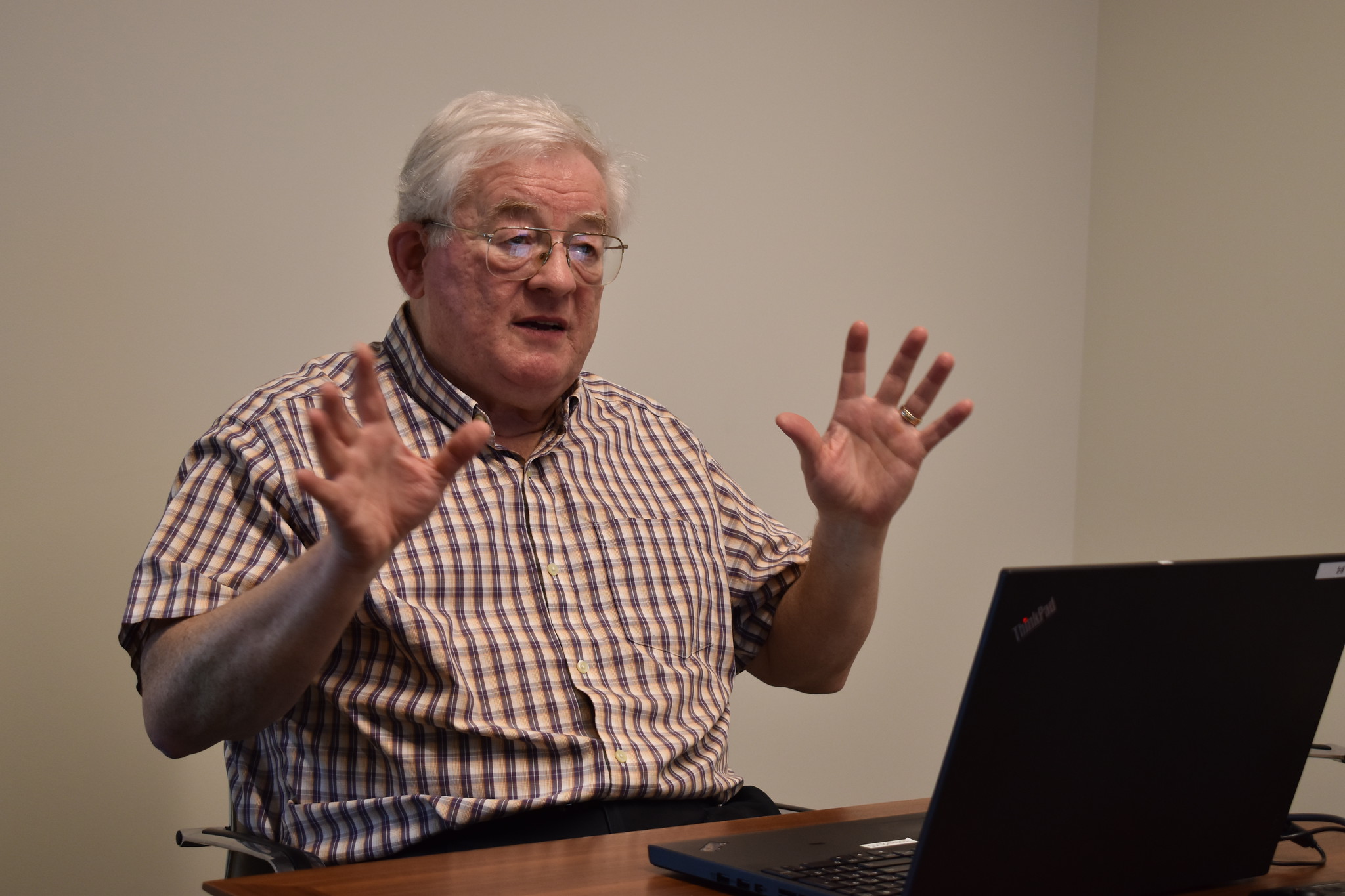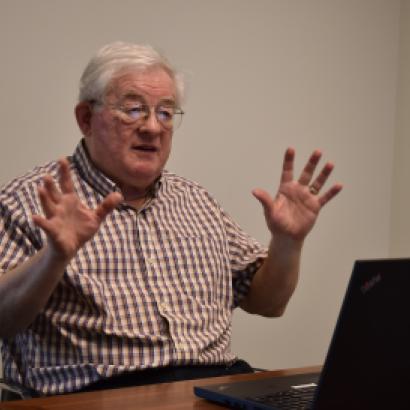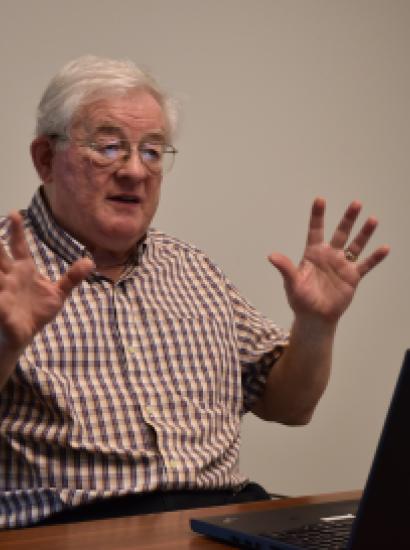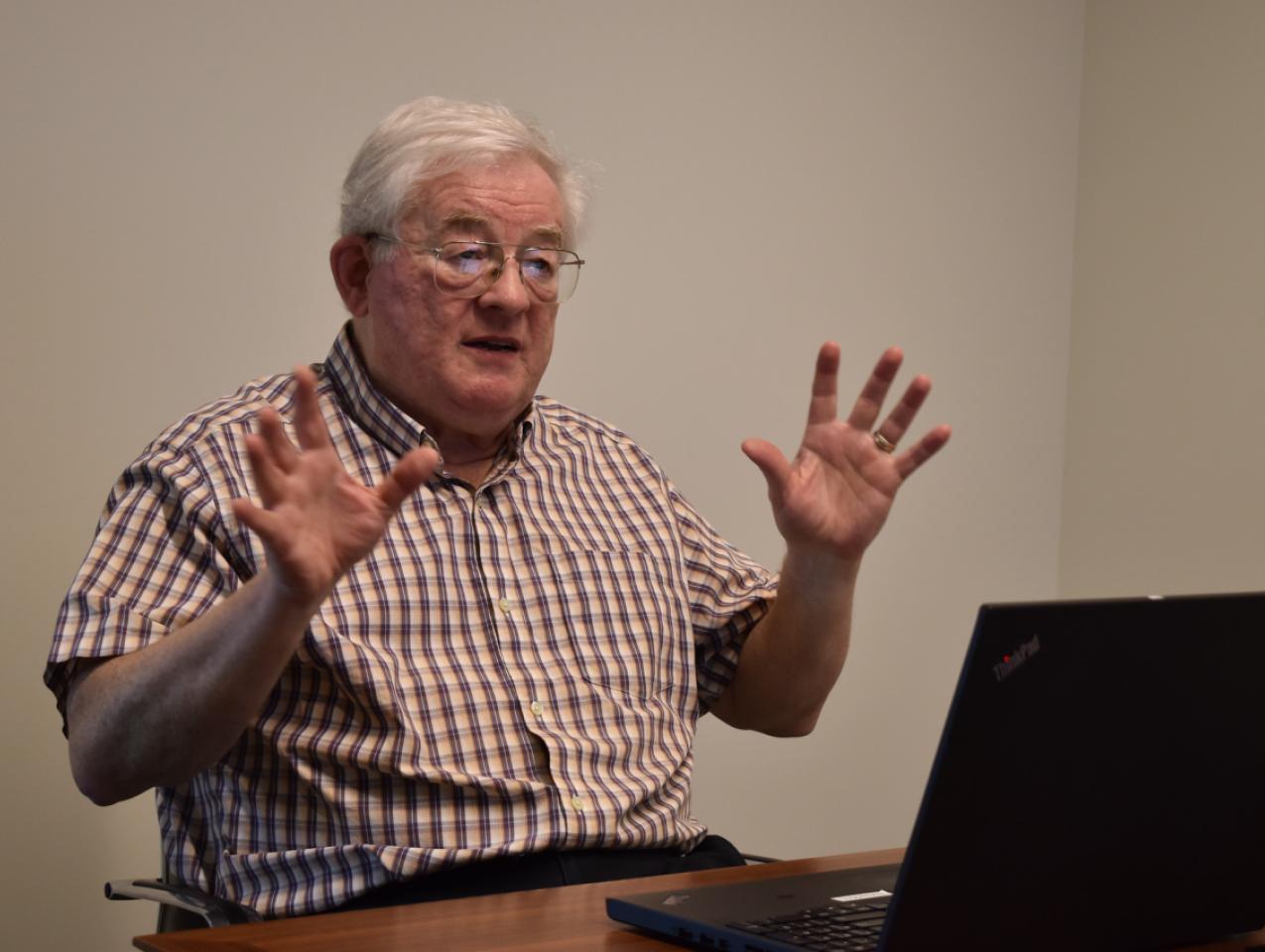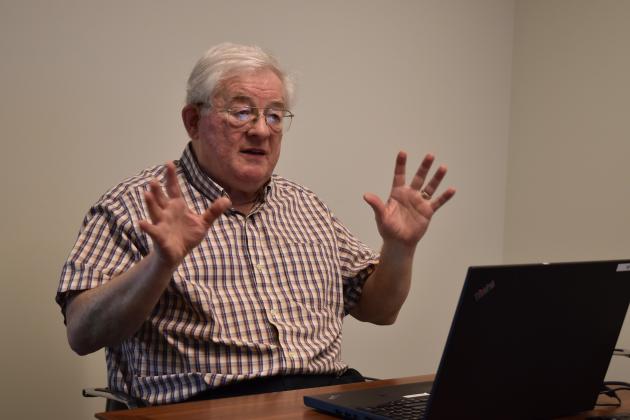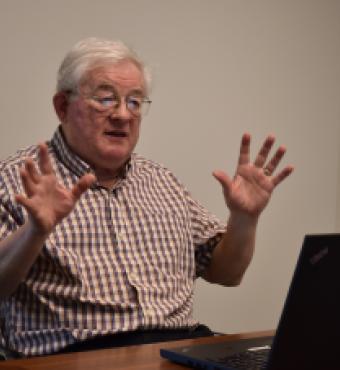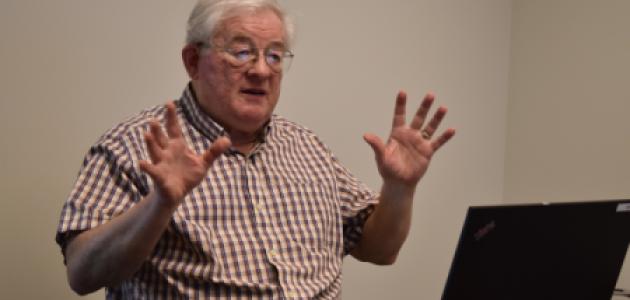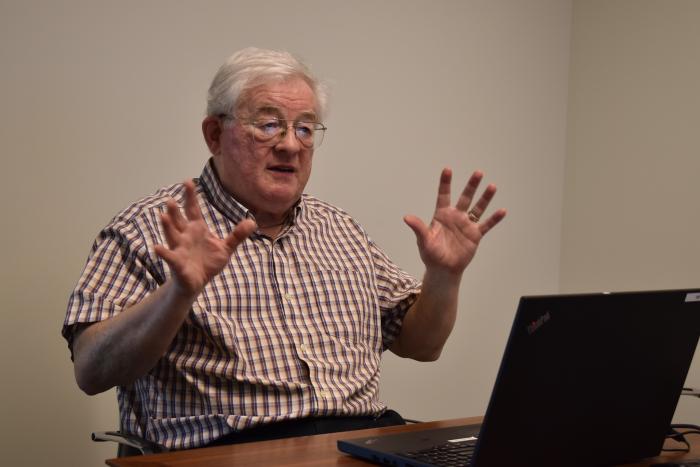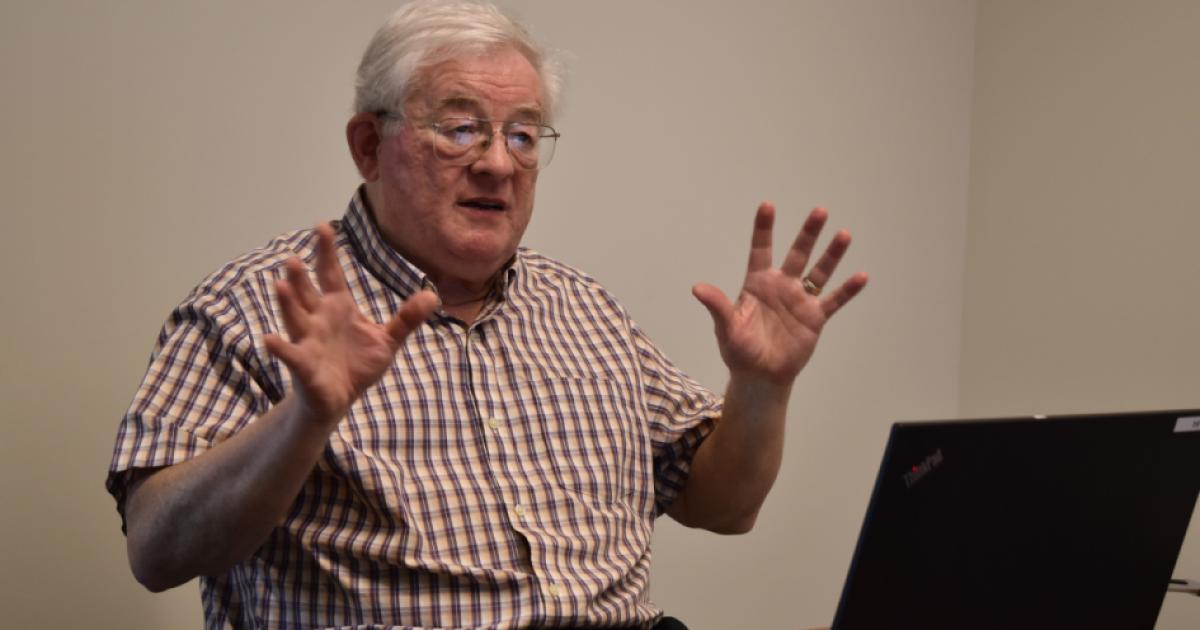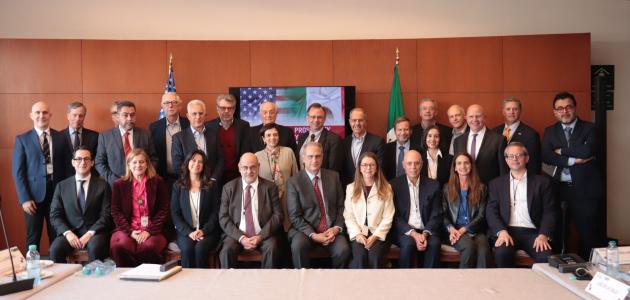Hoover Institution, Stanford University
Kenneth Judd teaching a course on Zoom.
by Jonathan Movroydis
Kenneth L. Judd, the Paul H. Bauer Senior Fellow at the Hoover Institution, is an expert in the economics of taxation, imperfect competition, and mathematical economics.
In this interview, Judd discusses teaching a class to University of Zurich students from Hoover Institution offices via video conferencing technology. He is among the rare professors across academia who were teaching on Zoom prior to the outbreak of COVID-19. Judd also talks about his field of computational economics and how it applies to tax and environmental policy.
What is the nature of the course you teach to University of Zurich students on computational economics?
Computational economics is basically about teaching economists how to use computational mathematics in their research, particularly in their PhD theses. The problem is that economists do a lot of computation, but they do not always know the best algorithms, or how to decide which algorithm to use for specific problem sets. They typically aren’t aware of the best software or hardware to use either.
My course teaches applications for macroeconomics and what we call industrial organization. This entails empirical research in how firms behave, their products, the price levels they set, and how they compete in markets. I teach students how they can use computational methods to solve problems with firms’ financial portfolios and respond to different tax policy environments.
Computation is used throughout almost all of economics. The field is deeply empirical, statistical, and analytical. It is essentially math and can thus be applied to a wide variety of policy issues.
How did you get involved in the University of Zurich?
This is a twenty-five-year story. My main partner in the effort is Karl Schmedders. I met him when he was a PhD candidate at Stanford University, in the operations research department. I became a member of his dissertation committee and hired him as a postdoctorate fellow. I helped him get a position at Northwestern University’s business school. He went from there to a chaired professorship at the University of Zurich. Over the years, we have collaborated on several projects together. Last fall, he invited me to teach a PhD course at Zurich to his students via Zoom.
Did you find that teaching via Zoom has been as effective as being in the classroom?
It’s too early to measure effectiveness. Students can simultaneously see my slides and watch me as I emphasize certain points, which I think is better than listening to a disembodied voice. I do like the ability to integrate live video with my slides. The biggest challenge on this medium has been student participation. They seem less comfortable about speaking up and interrupting lectures than in the classroom setting. I did learn a lot about this medium, and have many ideas about how to do this kind of teaching better in the future.
What are your students’ career goals?
Most of my students plan to work in academia as professors, or as researchers at policy agencies like CBO [Congressional Budget Office], the Fed, and ECB [European Central Bank]. Quite frankly, I prefer working with these types of students as opposed to those who want a career in finance. The latter would not be as interested in working with me, because I cover a broader expanse of study than they care about.
My preference for teaching future professors is strong. Several years ago, I ran a two-week workshop, which received a large number of applications for admission. One of the prospective students had worked on Wall Street. We only had thirty seats to give out in an application pool of two hundred. I didn’t want to spend my time pro bono on someone who would go back to Wall Street and make even more money. In this case, I was wrong. Fortunately, her advisor contacted me and told me she wanted to be a professor. I trusted his judgement, invited her to attend, and ended up being on her dissertation committee. She is now teaching at a business school in the Boston area.
One practice that is popular now among my students is using empirical methods to analyze decision making by individuals. This means capturing data about a person, including their educational background, work life, and consumer behavior. Once this data is obtained from a lot of people, we try to tease out what their demand curve would be for goods and services and what their supply curve would be for labor and savings. I enjoy supporting this kind of work, because it helps students understand such policy questions as: How will a certain tax policy impact these supply and demand curves?
Students may not always be interested in taking the tax angle. However, I teach them my methodology and try to synergize my interests with them wherever possible.
Do you teach your students how to capture and analyze survey data?
Many economists are skeptical about survey data. When you ask people, “How much do you think we should spend in order to save polar bears?,” you will likely hear some large numbers. But when it comes to real decision making by the politicians they elect, polar bears suddenly aren’t that important. Sometimes all you have is survey data, but you then want to impose some consistency checks on the data. For example, there is a survey which, every year, asks a person questions like “How much education have you had?” I once worked with a data set where some individuals would say “Ten years” at first, but then “Five years” in later years. In general, the data used in economics is noisy.
I teach my students the mechanics of number crunching and advise them on the best computational tools from statistics they can apply in real-world situations. One of the functions of those computations is to detect noise in the data and choose a way to deal with it. Economists often call these statistical programs “black boxes”. They think it’s just about inputting a lot of data, reading the results, and not thinking about what happens in between. This shallow understanding can easily lead to misinterpretation of the results. A researcher should understand how that box works. I teach students that a box is black only until you open it up and turn on the lights. Once a researcher knows the math, he or she can apply it to multiple disciplines and problem sets.
Aside from taxation, to what other areas of policy do you apply your discipline in computational economics?
A paper of mine examining the potential impact of climate change policy on the global economy recently appeared in the Journal of Political Economy, one of the top journals in economics. In this research, my coauthors and I had to use supercomputers. Fortunately, I was able to reserve time on the National Science Foundation supercomputer, called Blue Waters, which is housed at the University of Illinois. It would take tens of thousands of laptops running for a year or more to complete the same work. This is the scale of computational power that is necessary to solve complex economic problems.
We were the first to do anything on climate change policy on that scale. Many have extended [William] Nordhaus’s Nobel Prize–winning work, done in the early 1990s, on climate change policy, but did so only on laptops. I wanted my work to include aspects of economic and climate uncertainty that affect our choice of policies. One theme of our work is that climate change policy is like insurance and should give extra weight to the possible bad events. Doing this in a flexible manner, utilizing the best information we have about economic and climate uncertainty, required the use of a supercomputer.
What do you hope your students learn from this course?
Economics graduate students get serious training in econometrics and statistics, but no training in computational methods other than exposure to the ad hoc methods their professors use. The goal of the course is for students to understand how to use computational analysis and tools that are much better than the ones their colleagues will be using.
Many of Karl Schmedder’s students at the University of Zurich have gone on to be professors elsewhere in Europe. In turn, many of these professors’ students are watching my course just for their own enrichment. These lectures will also be posted publicly. So, the long-run scope is worldwide, not just among my students at the University of Zurich.
You were planning to travel to the University of Zurich this May to have face time with students. How did the outbreak of COVID-19 impact your syllabus plans?
I had to cancel that trip because of COVID-19. Both the face-time interaction as well as being in the same time zone would have been beneficial. There was no change in the syllabus, but this change was a loss.







